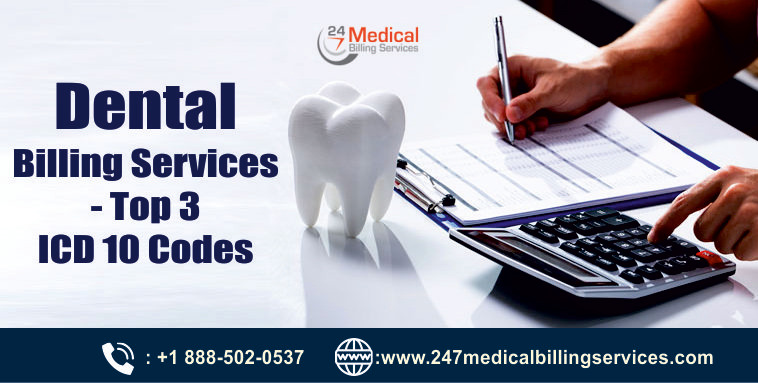
Dental Medical Billing Services - Top 3 ICD 10 Codes
Not many dentists are aware of performing medical billing for their dental practice. Many of you may think that dental falls under luxury treatment, and therefore, it is not legal to entitle medical billing. But dental medical billing Services is legal and it requires following proper codes in a right manner. Medical billing is crucial for dental practices since it extensively improves the revenue of your practice, acceptance of many cases, high coverage to patients that increases their percentage of retaining, etc.
Coding plays an important role in dental billing Services because not many dentists are aware of using the right codes or knowing the codes but unable to send claims on-time or spending time for documentation. There are thousands of ICD-10 codes available for dental billing Services in which we will look at some codes that can impact the medical billing of your dental practice.
K03.81 – Cracked tooth
K03.81 is a billable diagnosis code that dentists use for specifying a medical diagnosis of cracked tooth. It is only valid for bills and claims raised on or after October 1, 2020 and goes till September 30, 2021 as per the new ICD-10 changes by AMA. It can also be used for cases like cracked crown, cracked root, cracked tooth, or tooth crown future.
Dentists have to be careful while billing for cracked tooth because sometimes, not many know that the same code is applicable for different types of treatment connotations.
K02-Dental caries
This is one of the complicated ICD-10 codes in dental medical billing, and it involves several downline categorizations of symptoms and treatment. This code involves all aspects of dental conditions of dental caries such as symptoms, screening tests for diagnosis, and treatment procedures. Here are certain coding complications that dentists may experience with dental caries:
K02.3- Arrested dental caries
K02.5-Dental caries on pit and fissure surface
K02.51-Dental caries on pit and fissure surface, limited to enamel; K02.52-peneterating into dentin; K02.53- penetrating into pulp
K02.6-Dental caries on smooth surface and this has three sub-categories again.
K02.7-Dental root caries
K02.9-Dental caries, unspecified.
Therefore, coding for dental caries is quite a challenging process and may end up in confusion for dentists, thereby resulting in claim denials.
Other complicated codes
S01.541A relates to puncture wound with foreign body of lip, initial encounter; V18. 0xxA relates to pedal cycle driver injured in non-collision transport accident in non-traffic accident; Y93.55 relates to activity and bike riding, etc.
Along with the specified codes, there are several other codes that were sent for claims without assigning the respective procedure codes due to complexity in identifying the right code.
Conclusion
To recap, due to assumption of many practices that dental medical billing may not be viable legally, dental medical billing and coding has been a nightmare to many practices. There are many changes in ICD-10 coding recently and more than the beginning, dentists find it even more challenging with dental billing services.
Read More: Common Dental Billing Errors that are Impacting Timely Payments


.png)
